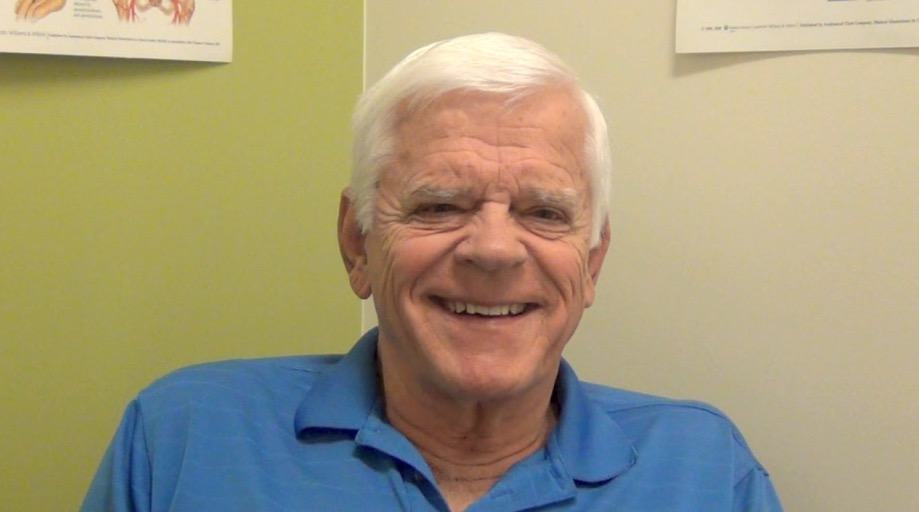How does an Anterior Total Hip Replacement Help Patients Regain Mobility?
- What is an Anterior Total Hip Replacement?
- What are the Benefits of an Anterior Total Hip Replacement?
- What Results Should a Patient Expect from an Anterior Total Hip Replacement?
When you think of a hip replacement, what comes to mind? Does a long hospital stay? Limited movement? Fear of future dislocations? What if it’s possible to have a total hip replacement without any of those negatives?
An anterior (front) total hip replacement is a minimally invasive hip replacement procedure resulting in faster recovery times, less pain, and a greater range of motion following surgery than the traditional, posterior total hip replacement.
Thomas Zurosky, a recent patient of Travis B. Van Dyke, M.D., a board-certified orthopedic surgeon specializing in joint replacement, had an anterior total hip replacement at Orlando Orthopaedic Center after years of hip pain.
“The hip pains have been coming on the past year or two and it got to the point where it was unbearable,” says Thomas. “I was unable to do the things I want to do; but thanks to Dr. Van Dyke, I feel like I can do anything and I don’t have to worry about any pain or discomfort whatsoever.”
For Thomas, he says the biggest benefit has been getting back to the golf course.
“I went home the day after surgery,” he says. “It was incredible, I went in for the operation and the next day I had no pain and in about three weeks I was playing golf again.”
What is an Anterior Total Hip Replacement?
With the anterior total hip replacement, the surgeon makes a small incision on the front of the body as opposed to the back (posterior) to replace the hip joint.
Why does this make such a difference when compared to a traditional hip replacement? A traditional posterior total hip replacement requires a larger incision beside or behind the hip joint where the muscle is cut in order to reach the hip joint. Following the traditional hip replacement surgery, a patient will likely be in the hospital for a few days.
The anterior approach is known for its ability to spare muscle and tissue, thus resulting in a faster recovery, lower risk of dislocation, a shorter hospital stay, and less downtime for patients.
“The minimally invasive anterior approach is preferred by myself and just about every eligible patient because it offers so many benefits,” Dr. Van Dyke says.
To complete the surgery, once the cartilage and damaged bone is removed from the socket, the surgeon replaces the hip joint completely. The new hip joint is a durable prosthetic that replaces the “ball and socket.” The damaged part of the femur (thigh bone) is replaced with a metal stem. Then, a ball is placed on top of the stem.
Total hip replacement is typically recommended for patients who are experiencing:
- Limitations in everyday activities due to hip pain
- Continued hip pain while resting
- Stiffness in the hip
- Reduced mobility
- Chronic pain not relieved by physical therapy, medication or walking supports
“Whenever my patients qualify, I recommend anterior total hip replacement surgery over traditional, posterior hip replacement surgery,” Dr. Van Dyke says. “Patients typically report high levels of satisfaction with their new hip once they have healed completely. In fact, patients do so well that I have very little postoperative restrictions; and I have committed to performing anterior total hip replacements exclusively, except for revision situations.”
What are the Benefits of an Anterior Total Hip Replacement?
If a patient qualifies as a candidate for anterior total hip replacement, there are benefits that differ from a traditional posterior total hip replacement.
The benefits of an anterior total hip replacement include:
- Faster recovery
- Shorter hospital stay
- Fewer restrictions following surgery
- No “hip limp” because the buttocks muscles are not affected
- Reduced risk of dislocation
What Results Should a Patient Expect from an Anterior Total Hip Replacement?

Thomas Zurosky – anterior hip replacement patient OOC
After anterior total hip replacement, a patient will likely be in the hospital for only one day.
Thomas Zurosky, a recent patient of Travis B. Van Dyke, M.D., says his anterior approach total hip replacement helped him regain his quality of life much faster than he anticipated.
“I was in the hospital Wednesday and I was home Thursday,” Thomas says. “I was playing golf within about two and a half to three weeks and I couldn’t be happier.”
There will be several weeks of physical therapy exercises to help patients regain strength and range of motion following surgery.
“Besides the golf, my movement around the house has been much easier,” Thomas says. “I teach at a college, Valencia College, and I’m up and down steps rather than the elevator. There is no pain at all.”
Thomas encourages anyone considering the surgery to go through it sooner rather than later.
“My advice to anyone is if you get in, don’t wait, get it done,” Thomas says. “I do suggest Dr. Van Dyke’s anterior approach; the recovery time is so much shorter and it’s so much easier on you. The results have been phenomenal.”


